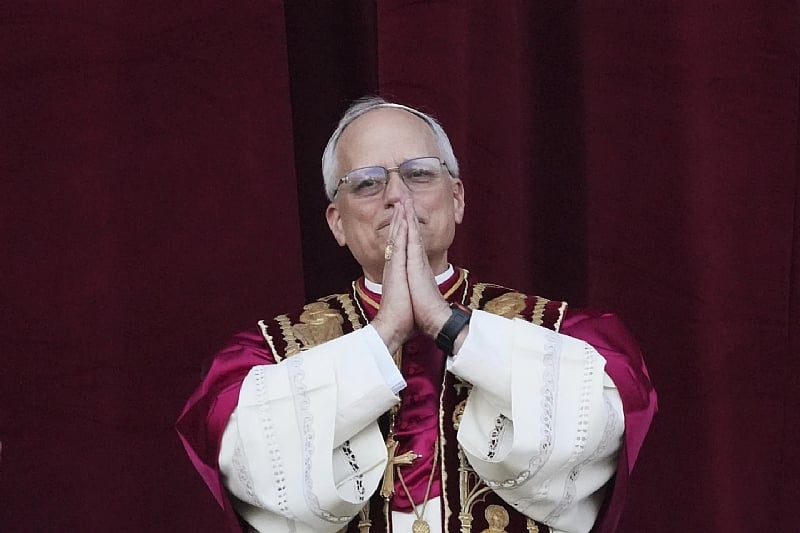The election of Pope Leo XIV on May 8, 2025, following the death of Pope Francis, marks a momentous occasion in the history of the Catholic Church. Pope Leo XIV, born Robert Francis Prevost, is the first American pontiff and holds dual citizenship with the United States and Peru. His elevation brings renewed attention to longstanding questions about the racial and cultural composition of the Church’s leadership.
While his background includes significant pastoral experience in Latin America, and he is closely tied to the Global South, his election raises a vital question: Has the Church truly turned a corner on the racial and Eurocentric legacy of the papacy or are we still witnessing symbolic diversity that leaves deeper structures untouched?
A new Pope, but a familiar pattern
Pope Leo XIV’s election breaks some precedent. He is the first pope from the United States, and his decades-long service in Peru aligns him with the lived realities of many Catholics in the Global South. His missionary work and multicultural background present a more geographically inclusive profile than most of his predecessors.
However, it is worth noting that Leo XIV is still racially white, and his theological training, ecclesial culture, and pastoral advancement occurred within structures historically shaped by European norms. Like Pope Francis, an Argentinian of Italian descent, Leo XIV represents the continuation of whiteness in papal identity, even as the Church seeks to widen its global perspective.
The racial imbalance at the Church’s highest echelon
For over 1,200 years, the papacy has been dominated by white Europeans. The last clearly non-European pope, Pope Gregory III, was Syrian and elected in 731 AD. Since then, the College of Cardinals which is the body responsible for choosing the pope has largely upheld leadership patterns that favour candidates moulded within European frameworks, regardless of where they serve.
Pope Leo XIV’s election shows that geographic diversity is becoming more acceptable, but racial and cultural representation, especially of Black, Indigenous, and Asian Catholics remains elusive.
A Church whose demographics tell a different story
The Catholic Church today is a global institution increasingly rooted in the Global South, though its leadership remains predominantly European.
Between 2022 and 2023, the global Catholic population grew by 1.15%, reaching 1.406 billion. Africa, home to 20% of the world’s Catholics, saw the highest growth at 3.31%, rising to 281 million, with the Democratic Republic of Congo (55 million) and Nigeria (35 million) leading. The Americas account for 47.8% of Catholics, with Brazil alone representing 13% of the global total at 182 million. South America holds 27.4%, Central America 13.8%, and North America 6.6%. Asia, comprising 11% of Catholics, grew by 0.6%, with the Philippines (93 million) and India (23 million) dominating Southeast Asia.
In contrast, Europe, once the heartland of Catholicism, is experiencing a steady decline in religious participation. Europe holds 20.4% of the Catholic population but grew just 0.2%. Oceania, with just over 11 million Catholics, increased by 1.9%.
These figures are drawn from the Pontifical Yearbook 2025 and Annuarium Statisticum Ecclesiae 2023, published by the Vatican Publishing House (LEV) and compiled by the Central Office of Church Statistics.
Church attendance, vocations to the priesthood, and overall Catholic identification have dropped sharply in many European countries, including traditionally strongholds like Italy, France, and Ireland. The reality is clear: while Europe shaped Catholicism’s leadership structures, its future lies elsewhere.
Need for representation beyond geography
Pope Leo XIV’s election is a step forward in some ways, but it also highlights a persistent issue: symbolic representation is not the same as structural inclusion. A white man with experience in Peru is a welcome gesture, but the global Church has yet to elevate leaders who are Black, Indigenous, or Asian in both origin and identity.
The Church risks being seen as offering token inclusion, geographically expansive yet culturally narrow, if it does not begin to reflect the full diversity of its faithful, not just in language or mission, but in power and vision.
A Church called to structural and spiritual reform
Catholic theology emphasises the equal dignity of all people, the universality of salvation, and the unity of the Body of Christ. But these spiritual ideals ring hollow if the institution fails to mirror them in practice. For many in the Global South, the absence of racially diverse leadership reinforces feelings of exclusion rooted in colonial history and theological marginalisation.
The Church has a unique opportunity to affirm its global identity not only in doctrine but in leadership that reflects the faces, cultures, and wisdom of all its people.
Need for broader Ethnic representation
The election of Pope Leo XIV is historically significant and offers hope for a more inclusive Church. His ties to Latin America and his pastoral approach mark a shift from traditional European dominance. But the papacy still has never been held by a Black African, an Indigenous person, or an East or South Asian Catholic.
Until it does, the papacy will continue to reflect a narrow vision of universality, one still shaped more by Europe’s past than by the world’s present.
This is not a condemnation, but a call to recognise that the next frontier for the Catholic Church is not only where its leaders come from, but who they are allowed to be.
*Dr Moses Deyegbe Kuvoame is an Associate Professor at the University of South-Eastern Norway (USN).
Acknowledgment
I would like to thank the members of the Kpandu Secondary School Old Students Association 79/81 Year Group (KOSA 79/81) WhatsApp platform for their engaging discussion on the election of Pope Leo XIV. I am especially grateful to Dr. Selete Avoke, Mr. Emmanuel Apawudza, and Professor Karl Alorbi for their thoughtful and reflexive contributions, which enriched the reflections shared in this article.


